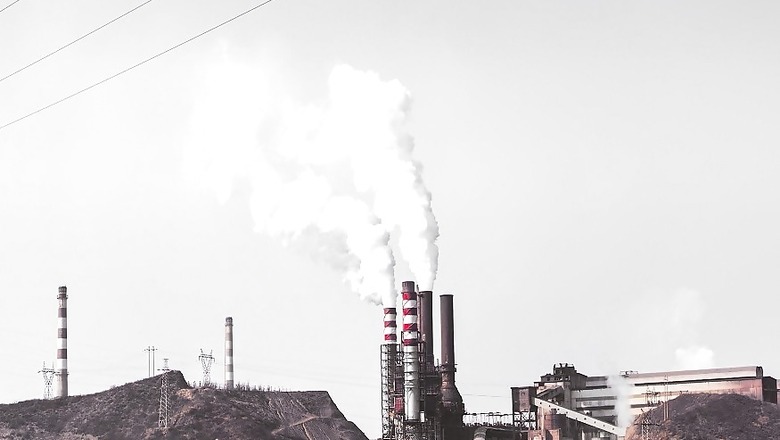
views
Berlin: The carbon dioxide concentration in the atmosphere has not yet changed despite the restrictions of social life caused by the COVID-19 pandemic, according to a study which calls for better models to quantify the ability of land and ocean ecosystems in trapping released greenhouse gases. The measurements made by scientists from Karlsruhe Institute of Technology (KIT) in Germany, revealed that while reductions in carbon dioxide emissions of up to eight per cent has been estimated for 2020, the concentration of the greenhouse gas in the atmosphere has not yet decreased.
According to the study, published in the journal Remote Sensing, while the COVID-19 pandemic has caused people to increasingly work from home, lowering traffic volume and carbon dioxide emissions, this reduction may be insufficient. “To reduce carbon dioxide concentration in the atmosphere in the long run, restrictions imposed during the corona pandemic would have to be continued for decades. But even this would be far from being sufficient,” said Ralf Sussmann, a co-author of the study from KIT. In the study, the scientists studied a long-term scenario that can be assessed well with atmospheric measurements — the goal of the Paris Climate Agreement to limit global warming to 1.5 degrees Celsius.
They said this goal can only be reached by an immediate significant reduction of carbon dioxide emissions, and a further decrease down to zero by 2055. “The restrictions imposed during the corona crisis, however, are far from being sufficient. They have just resulted in a one-time reduction by eight percent,” Sussmann said. In order to reach zero emissions in the coming decades, he said cumulative reductions of the same magnitude would be required every year — i.e. 16 per cent in 2021, 24 percent in 2022, and so on. “For this, political measures have to be taken to directly initiate fundamental technological changes in the energy and transport sectors,” Sussmann added. The researchers measured the concentrations in different layers of the atmosphere above at several places around the globe, including in Germany. “High-tech infrared spectrometers are applied, which use the sun as a light source. The measurement method is highly precise, uncertainties are in the range of a few thousandths,” Sussmann said.
According to the scientists, the long life of carbon dioxide, and the high background concentrations that have accumulated since the start of industrialisation prevent the changes in the atmosphere from being detected. “But also natural impacts make early detection difficult — anthropogenic emissions, the main cause of the long-term increase in atmospheric carbon dioxide, are superposed by annual fluctuations of the growth rate due to natural climate variabilities of ocean sinks and land vegetation,” Sussmann said. So the researchers said successful emission reduction is hard to detect by atmosphere measurements. “The forecast uncertainties for annual growth rates must be reduced. This requires improved terrestrial ecosystem models and ocean observations to better quantify the land and ocean sinks dominating interannual variability,” they wrote in the study.
In the current research, the scientists compared the measurements with the prognoses of the atmospheric growth rate for 2020 — with and without the restrictions put in place due to COVID-19. “Precision analysis of atmosphere measurements revealed that the impacts of COVID-19 measures on the atmosphere might be measured after little more than six months, if the reference state without COVID-19 would be predicted precisely,” the KIT scientist said. “In any case, we would be able to find out within presumably two and half years, whether global political and social measures will help us find viable alternatives of fossil fuels and reach the goals of the Paris Climate Agreement,” Sussmann added.
Disclaimer: This post has been auto-published from an agency feed without any modifications to the text and has not been reviewed by an editor



















Comments
0 comment